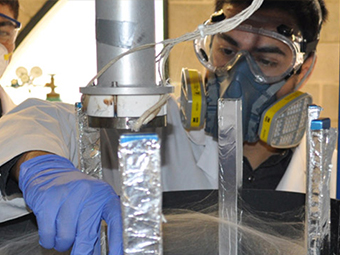Brain Tumor Segmentation and Surveillance with Deep Artificial Neural Networks
Document Type
Book
Publication Date
3-17-2021
Abstract
Brain tumor segmentation refers to the process of pixel-level delineation of brain tumor structures in medical images, such as Magnetic Resonance Imaging (MRI). Brain tumor segmentation is required for radiotherapy treatment planning and can diagnosis through surveillance. Automatic segmentation of brain tumors is a challenging problem due to the complex topology of anatomical structures, noise from image acquisition, heterogeneity of signals and spatial/structural variations of tumors. Machine Learning (ML) techniques, including Deep Artificial Neural Networks (DNNs), have shown significant improvement in classification and segmentation tasks. This chapter provides a comprehensive review of supervised learning models and architectures for image segmentation. A particular emphasis will be placed on U-Net and U-Net with Inception and dilated Inception modules for brain tumor segmentation. The performance of the proposed models is evaluated using the multi-modal BRAin Tumor Segmentation (BRATS) benchmark dataset. Furthermore, we present a new Bayesian deep learning framework, called extended Variational Density Propagation (exVDP), for quantifying uncertainty in the decision of DNNs. In particular, exVDP provides a pixel-level uncertainty map associated with the network’s segmentation output. Finally, we present clinical retrospective studies in tumor surveillance using MRI data from patients with glioma and show the advantages accrued from these methods.
Recommended Citation
Waqas, A., Dera, D., Rasool, G., Bouaynaya, N.C., Fathallah-Shaykh, H.M. (2021). Brain Tumor Segmentation and Surveillance with Deep Artificial Neural Networks. In: Elloumi, M. (eds) Deep Learning for Biomedical Data Analysis. Springer, Cham. https://doi.org/10.1007/978-3-030-71676-9_13
Publication Title
Deep Learning for Biomedical Data Analysis
DOI
10.1007/978-3-030-71676-9_13


